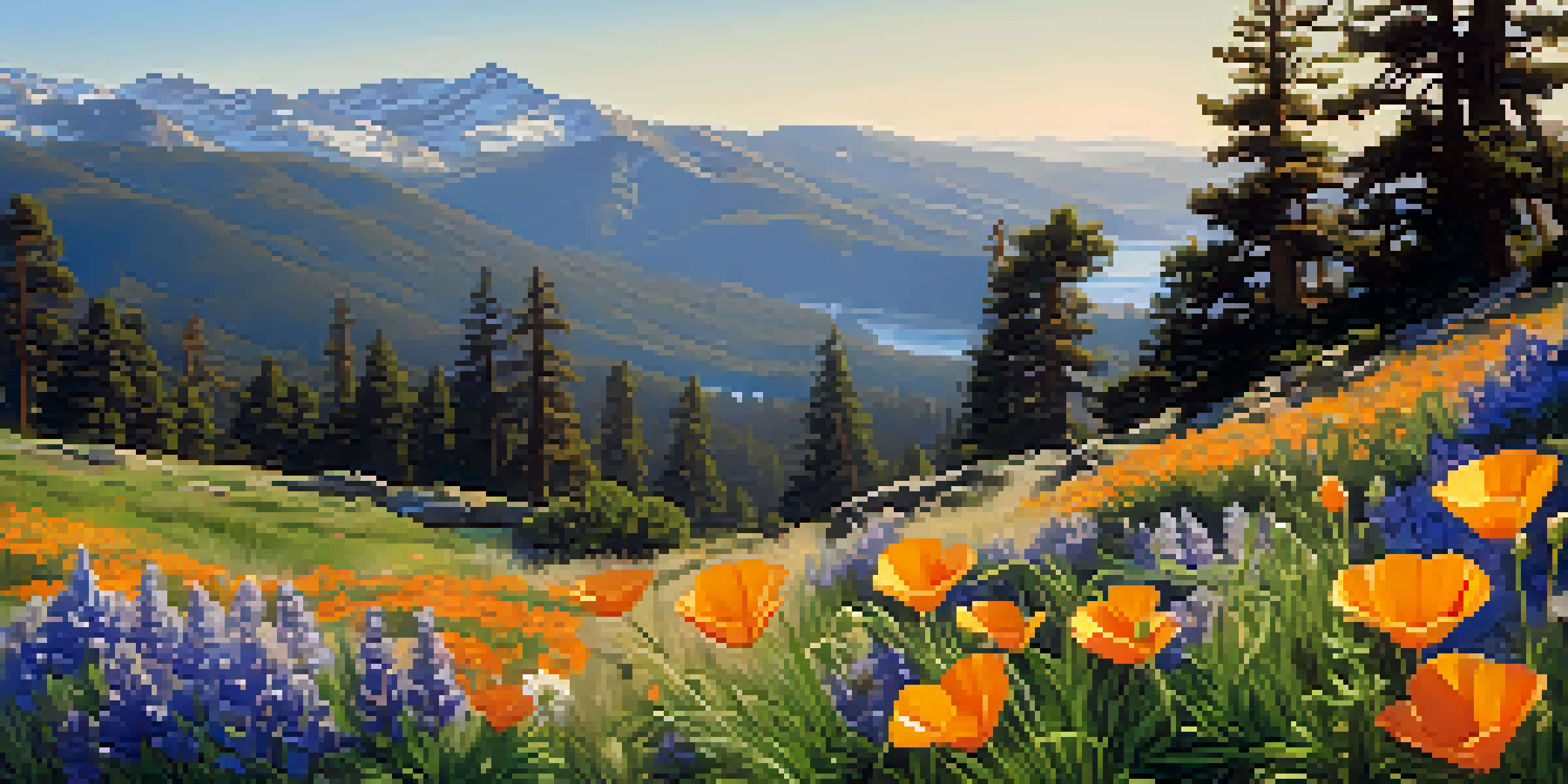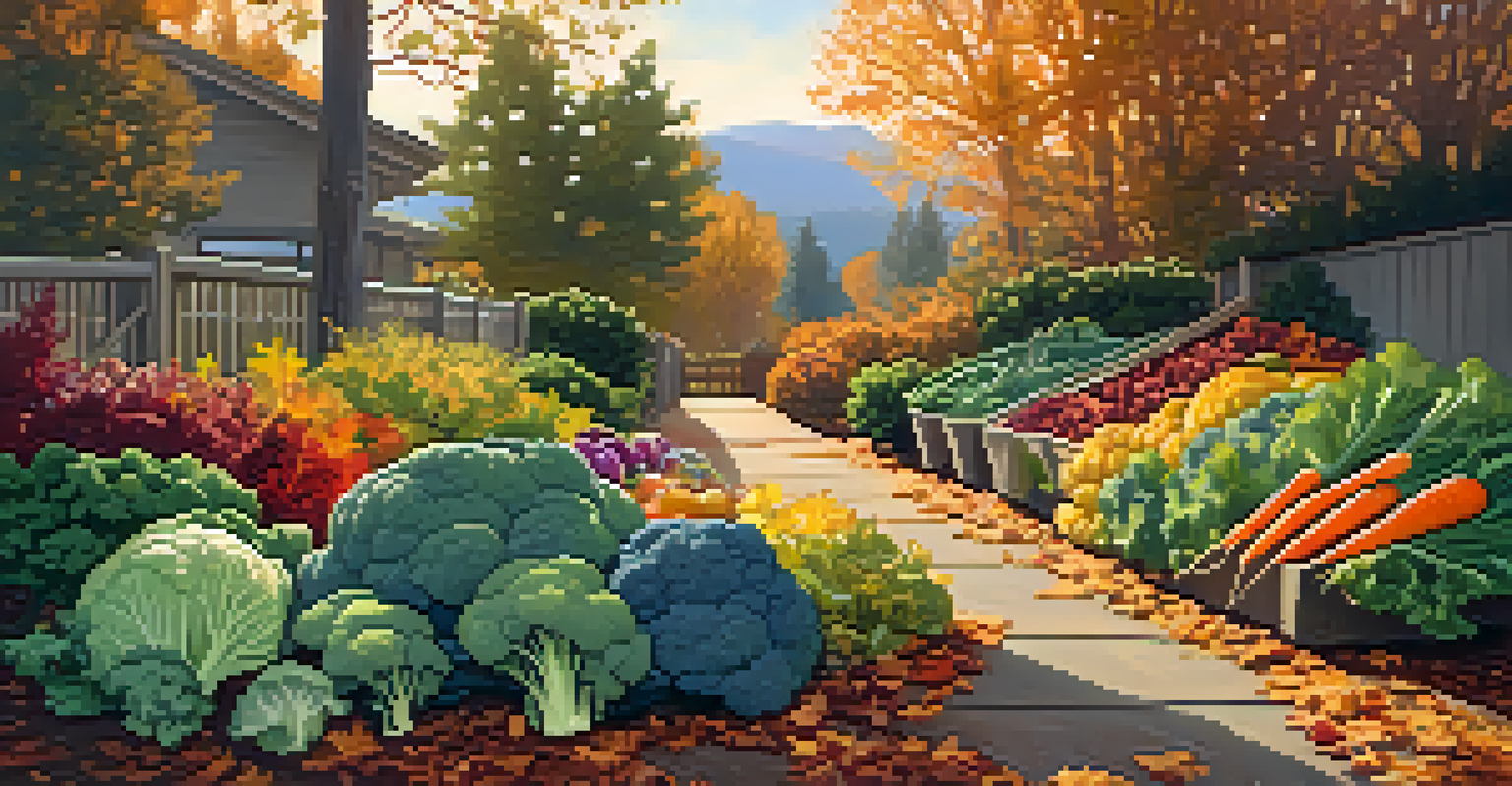Seasonal Gardening in Big Bear: What to Plant When

Understanding Big Bear's Unique Climate for Gardening
Big Bear is renowned for its stunning natural beauty, but its unique climate can pose challenges for gardeners. At an elevation of 6,752 feet, the region experiences a mix of warm summers and chilly winters, making it essential to choose plants that thrive in these conditions. Understanding the USDA hardiness zone (Zone 7) helps gardeners select the right varieties for the local environment.
Gardening is a way of showing that you believe in tomorrow.
The growing season typically runs from late spring to early fall, but frost can occur even in June and September. Therefore, planning your planting schedule around the last and first frost dates is crucial. By doing so, you can avoid planting too early and losing your plants to unexpected cold snaps.
Additionally, the amount of sunlight can vary, with some areas receiving full sun while others are shaded by trees or buildings. Observing your garden's specific conditions will guide your decisions on what to plant and when, ensuring a fruitful gardening experience.
Spring Planting: Getting a Head Start
Spring is an exciting time for gardening, as the snow melts and the ground begins to thaw. It's the perfect opportunity to plant cool-season crops such as peas, lettuce, and radishes, which can tolerate the still-chilly temperatures. Starting these plants early allows them to establish roots before the heat of summer sets in.

In Big Bear, the last frost usually occurs around late May. Therefore, it's wise to start these seeds indoors by late March or early April. Once the danger of frost has passed, you can transplant them outdoors, giving them a head start against weeds and pests that come with the warmer months.
Understand Big Bear's Climate
Gardening in Big Bear requires knowledge of its unique climate, including elevation, frost dates, and sunlight variability.
Spring also offers a chance to plant perennials like lavender and daylilies. These flowers not only add beauty to your garden but also thrive in the warmer summer months, providing a vibrant landscape as they bloom.
Summer Gardening: The Heart of Planting Season
Summer is often considered the peak planting season in Big Bear, with warm temperatures and longer days encouraging growth. This is the time to plant heat-loving crops, such as tomatoes, peppers, and zucchini, which flourish under the sun. Ensure that you plant these after the last frost date for the best results.
To plant a garden is to believe in tomorrow.
Additionally, summer is an excellent time to sow quick-growing varieties like beans and cucumbers, which can be harvested in just a few short weeks. These crops not only provide fresh produce for your kitchen but also help keep your garden vibrant and productive during the warm months.
Don’t forget to focus on watering and mulching during summer to protect your plants from heat stress. Keeping the soil moist and adding organic mulch can help retain moisture and prevent weeds, ensuring your plants thrive throughout the growing season.
Fall Gardening: Preparing for Winter
As the days begin to cool in fall, it's time to shift focus to crops that can withstand colder temperatures. This is the perfect opportunity to plant hardy vegetables like kale, broccoli, and carrots, which actually taste better after a light frost. These veggies can be sown directly into the ground in late summer or early fall.
It's also a great time for gardeners to think about planting garlic and shallots, which require a winter dormancy period before sprouting in the spring. By planting these in the fall, you set the stage for a bountiful harvest the following year.
Seasonal Planting Strategies
Each season offers specific opportunities for planting, from cool-season crops in spring to hardy vegetables in fall.
Moreover, fall is not just about planting; it's also about preparing your garden for winter. Clearing debris, mulching perennials, and protecting delicate plants with row covers or cloches helps ensure that your garden remains healthy and ready to spring back to life next year.
Winter Gardening: Planning and Maintenance
Winter in Big Bear may seem like a quiet time for gardening, but it’s a crucial period for planning and maintenance. While the ground may be frozen, you can still utilize this time to research and plan your garden layout for the upcoming spring. Creating a detailed plan helps you visualize what you want to plant and where.
This is also the perfect time to start your indoor gardening journey. Consider growing herbs like basil, parsley, and chives on your windowsill. Not only do they add fresh flavors to your meals, but they’re also a great way to stay connected to gardening during the colder months.
Lastly, don’t forget about maintenance tasks like cleaning and organizing your gardening tools. Taking the time to ensure your equipment is in good condition will save you stress when the busy planting season arrives in spring.
Choosing the Right Plants for Big Bear's Seasons
Selecting the right plants is critical for success in Big Bear’s seasonal gardening. Native plants, such as the California poppy and mountain lupine, are well-adapted to local conditions and can enhance your garden's sustainability. These plants often require less water and are more resistant to local pests.
In addition to natives, consider incorporating drought-tolerant varieties that can withstand dry spells in summer. Plants like succulents, sedums, and lavender not only provide visual interest but also thrive with minimal maintenance, making them ideal for busy gardeners.
Sustainability in Gardening
Implementing sustainable practices like composting and using native plants can enhance your gardening experience while benefiting the environment.
Lastly, don’t shy away from experimenting with annuals and perennials that add color and texture to your garden. By mixing different types of plants, you create a dynamic and visually appealing garden throughout the seasons.
Common Gardening Challenges in Big Bear
Gardening in Big Bear comes with its own set of challenges, primarily due to the elevation and varying weather conditions. One common issue is the occurrence of frost, even in the summer months, which can catch inexperienced gardeners off guard. It’s essential to stay informed about local forecasts and be prepared to cover plants when frost is predicted.
Another challenge is the thin mountain soil, which may lack essential nutrients. To combat this, consider amending your soil with organic matter, such as compost or well-rotted manure, to improve its quality and fertility. Regular soil testing can also help determine what nutrients your garden may need.

Lastly, pests and wildlife can pose a threat in Big Bear, with deer and rabbits often snacking on your hard work. Utilizing fencing or natural repellents can help protect your plants, ensuring that you enjoy the fruits of your labor throughout the growing season.
Creating a Sustainable Garden in Big Bear
Sustainability is a key consideration for many gardeners today, and Big Bear is no exception. Implementing practices such as composting can help reduce waste while enriching your soil. By composting kitchen scraps and yard waste, you create a nutrient-rich amendment that supports healthy plant growth.
Additionally, consider using rain barrels to collect water for irrigation. This practice not only conserves water but also provides your plants with natural, untreated moisture. It’s an eco-friendly way to keep your garden hydrated during those hot summer months.
Lastly, incorporating native plants into your landscape not only conserves water but also supports local wildlife. By creating a habitat for pollinators and beneficial insects, you contribute to a thriving ecosystem right in your backyard.